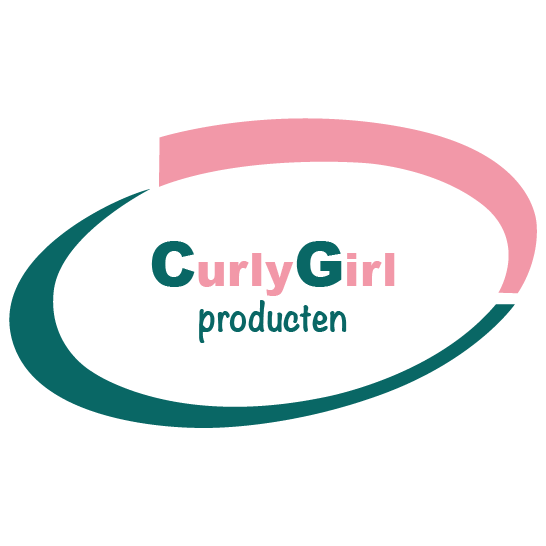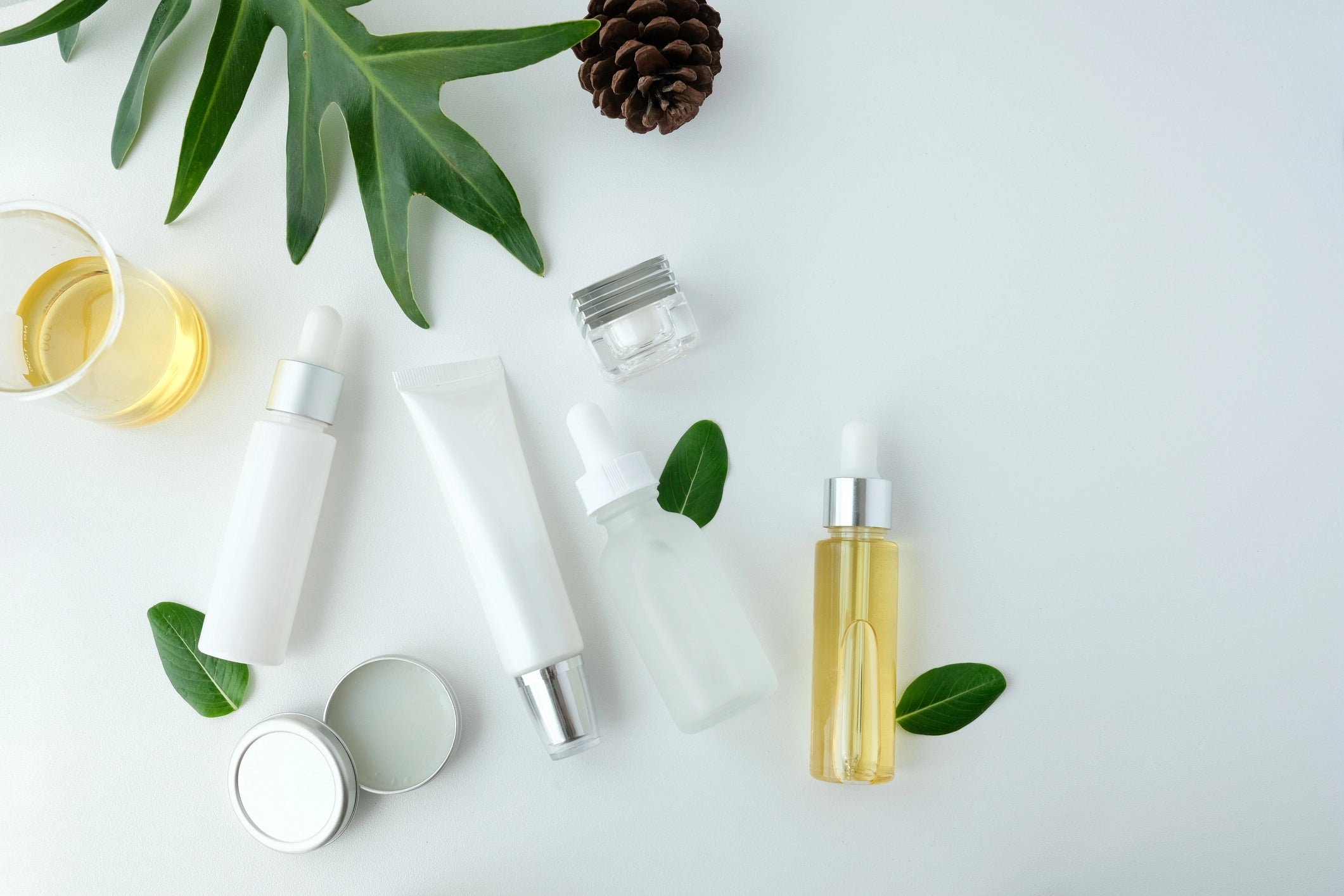Article: Large Proteins & Small Proteins, for whom?

Large Proteins & Small Proteins, for whom?
Hydrolyzed proteins have been used in hair products for decades. Even in small amounts (0.5% to 1%), hydrolyzed proteins can create a noticeable difference in hair care products. You can see how much protein is in the product by looking at the ingredients list. If there are proteins in the first 5 ingredients listed, this is a high-protein product or a protein treatment. The further down the list, it is a product with a lower protein content.
Hydrolyzed proteins are not whole, intact proteins like those found in foods. They have been broken into smaller pieces - smaller molecules - by treatment with acids or fermentation. Large proteins such as those found in foods are not very beneficial for hair. But hydrolyzed proteins can do several things, such as form a clear, flexible film over your hair that limits water loss. Some proteins penetrate beneath the outer hair cuticles to keep the hair hydrated in slightly deeper layers. Protein in products can also give a little extra support to the hair - which is great if your hair is fine or medium, but it can lead to stiffness and breakage if your hair is quite coarse and you use protein rich products too often.
Why use protein?
Protein is used for strength, shine, hydration and to reduce breakage. It helps temporarily repair damaged areas of the hair by filling in gaps in the cuticle. And it keeps the hair hydrated by limiting the loss of water from the hair.
Protein words
To find protein in an ingredients list, look for these words: hydrolyzed protein, amino acids, peptides. These are all proteins. Cocodimonium Hydroxypropyl Hydrolyzed (protein source - wheat, keratin, etc.) and Lauryldimonium Hydroxypropyl Hydrolyzed (protein source) are proteins that have been modified to be better hair conditioners and adhere better to the hair, adding more softness. Yeast extract is a protein. Hydrolyzed oats or hydrolyzed seeds may also contain protein.
Which hair needs protein?
- Damaged hair/porous hair: sun bleached, pool swimming/chlorinated, wavy and permanently dyed or semi-permanently dyed hair usually needs more protein. Hair that has a lot of high heat styling often needs extra protein because it has lost some of the protective layers that retain moisture and some natural proteins. If you brush your hair vigorously and the ends are thinner than the middle and look lighter in color, your hair may need protein, especially at the ends. Protein balances porosity in damaged hair.
- Dry hair - if you've tried deep conditioning, oil treatments (with coconut, palm, sunflower, avocado or olive oil - leave on for 4-8 or 12 hours) and those things don't work, the dryness of your hair could indicate a need for protein .
- Fine and medium hair: Protein also provides support for fine and medium hair because it adds just a little extra stiffness - protein is support for your hair. People with coarse hair tend to find that using protein too often causes their hair to feel stiff or brittle, dry or sticky, or possibly too soft and limp.
- Before coloring or highlighting or after a lot of sun exposure or dry wind exposure, hair can benefit from hydrolyzed proteins in products.
- Break in your hair. Do you see or hear a lot of breakage? If you've already tried deep conditioning or a long oil treatment, it's time to try some protein. Because protein helps keep hair hydrated (it slows down water loss!). It can help reduce breakage in dehydrated hair by increasing hydration. Hair is less likely to break when it is flexible and hair is most flexible when it is well hydrated.
How to use protein in your hair?
Look for shampoos or conditioners that contain hydrolyzed protein. Until you know how well your hair handles protein, you don't need protein in either shampoo or conditioner – just one or the other.
Protein styling products and protein leave-in conditioners can be great for damaged or porous hair or for fine and medium hair, are easy to use - try them once or twice, see how it works and then give the protein products a try. pause. Maybe your hair can use them every day - or maybe it can only use them occasionally. Pay attention to your hair and see how it reacts.
Try the product as the label initially suggests.
Protein treatments contain a lot of protein. They are usually marketed for damaged hair - as "repairing" products or strengthening products. If your hair breaks a lot and oils and conditioners don't work or if you know some or all of your hair is fine (like toddler hair), then you might go straight to strong treatments. You're safer with a product in a creamy base - one that also contains conditioners. If you're new to protein, you may prefer to use a conditioner with protein to see how your hair reacts to protein.
Adjust protein consumption
Choose smaller proteins (all amino acids, all peptides or hydrolyzed: silk, keratin, collagen) if you are new to proteins or have coarse hair. Larger proteins (oats, wheat, soy, greens, quinoa) tend to work well for fine hair and occasionally even coarse hair.
Using a mask after a protein treatment?
After using a product containing protein or a protein treatment, some people notice that their hair feels coarse or stiff. This is sometimes a sign that you have used too much protein, used protein too often, or used the wrong protein. But before you jump to that conclusion, try 1. applying extra conditioner and letting it sit for a few minutes, or 2. applying a deep conditioner (a mask) and leaving it with some heat for at least a few minutes let it pull. If that returns your hair to a flexible, less tangled state, follow up your protein use with additional (or deep) conditioning.
How to time protein use:
If you get a result you like from a product containing protein, there are 2 paths you can take.
- Increase protein . If you really love what protein has done for your hair, see how many times you can use it before you experience any of the signs of too much protein. BUT - limit the number of products you use that contain proteins. If you use protein in shampoo, conditioner, and leave-in products, you may get an incorrect "reading" about how much protein your hair can tolerate. Limit protein to a conditioner, or to a protein treatment initially.
- Be careful with protein: do not repeat protein use until the beneficial effects of the previous use begin to fade. This is the most careful approach. Good for those with coarse hair, or if your hair has had a bad experience with protein, if your hair is less porous or tends to get build-up quickly. If you use henna, this may be a better approach - for some people, henna also adds stiffness to hair that enhances the strengthening, supportive effect of proteins.
Signs of too much protein
Using protein too often, or using a protein-containing product that is too concentrated for your hair, or using the wrong protein for your hair can cause negative effects that almost seem to contradict each other:
Hair can become stiff, sticky, sticky, brittle, the curl pattern can be affected, it can feel dry and have too much volume.
Hair can become too soft, limp, flat and lose its wave or curl. Or overly smooth.
Doesn't that sound contradictory? It's true - and the same person can have both negative outcomes under different circumstances.
Protein-moisture balance?
Think of it as a balance between strength and stiffness versus softness. Strength/stiffness comes from protein, softness from oils and conditioners - collectively called "emollients". If your hair needs strength and support, protein may be a good choice. If you use too much protein and your hair becomes too strong or stiff, you will need more emollients to balance the stiffness with softness. If you've used too many oils and conditioners in hair that needs protein, it can become too soft and need some protein boost. But don't forget that hair that is too soft can also occur if you use too much protein.
Signs your curls need protein
- When wet, hair that needs protein tends to feel mushy and not dense, like an old cotton and poly blend shirt rather than a fabric made up of individual fibers. Once you add enough protein, the hair will feel like fiber again and you'll learn that mushy, thin feeling means you need protein.
- Hair that is losing its bounce may need protein.
- Hair that just isn't behaving even though you've tried deep conditioning or using oils probably needs protein.
- Hair that breaks off while using a lot of good (protein free) conditioner probably needs protein.
- Hair that remains dry despite using oils and conditioners may need protein for hydration.
- Hair that feels "smaller" when wet - and homogeneous or mushy - such as a very old, soft undershirt may need protein. Hair should feel like individual fibers when wet - so if it feels soft and mushy and non-fibrous when wet, you may need some protein.
How often to use protein
Porous hair that is not coarse can benefit from protein in a conditioner or in a leave-in product every wash day - the protein is needed to manage hydration and porosity. Or weekly protein treatments and use protein in your products in between.
Normal porous hair with a fine or medium width may be able to use a similar regimen.
Low porosity hair that is fine and medium can do well with weekly protein in a conditioner or a protein treatment for support and hydration.
People with thinner, lower density, lower porosity hair may also want to use protein for support and hydration between weekly treatments.
People with coarse hair that is porous (dry, damaged or chemically treated) can use protein occasionally - perhaps once a week (damaging chemical treatments, smaller proteins) or every 2-3 weeks; but coarse hair with low porosity may only need protein in a conditioner every 1-2 months, perhaps if you spend a lot of time in the sun or if your hair is wet for a long time.
Personalize protein products
-
Choose proteins based on size.
Amino acids and peptides are the smallest and are likely to correspond to the widest range of hair types - fine, medium and coarse, porous, normal porosity and even low porosity.
Hydrolyzed silk, keratin, wheat, quinoa, corn, soy and collagen are smaller and correspond to a wide range of hair types - fine, medium and coarse and low to high porosity.
Gelatin is between medium and large - better for porous or very damaged/brittle hair or fine hair.
Wheat, oats, quinoa, corn, soy, lupine and other plant or vegetable proteins generally have components that are medium to large and are best tolerated by porous hair, fine hair, damaged hair, chemically treated hair. Irregular use recommended for coarse or low porosity hair.
-
Select the timing, intensity and make a good assessment of the results.
Leave protein products or protein treatments on for longer to allow more protein to (temporarily) adhere to your hair for better hydration. This makes the treatment more intense.
Use heat with a protein-containing product or protein treatment to encourage the hair to soften and swell slightly, to improve the binding of protein to the hair and to increase the area where protein can adhere. This makes the treatment more intense.
Leave protein products on for a shorter time or without heat for a less intensive treatment - for example for coarse or medium-coarse hair, for frequent protein users or for porous hair.
Hair feels sticky and rough after using protein?
- Rinse very, very well. Apply plenty of rinse-out conditioner or a deep (intense) conditioner (without protein) and let it sit for 3 or 5 to 15 or 30 minutes (with or without heat). If that rough feeling doesn't go away with this post-protein deep conditioning, then you have...
- Leaving the protein on too long
- The protein was the wrong protein for your hair,
- Your hair didn't need the protein now or the protein was too concentrated (too strong), Choose a product with a lower protein content or dilute the product you have with water or conditioner to make it less concentrated next time.
-----March 2020----





